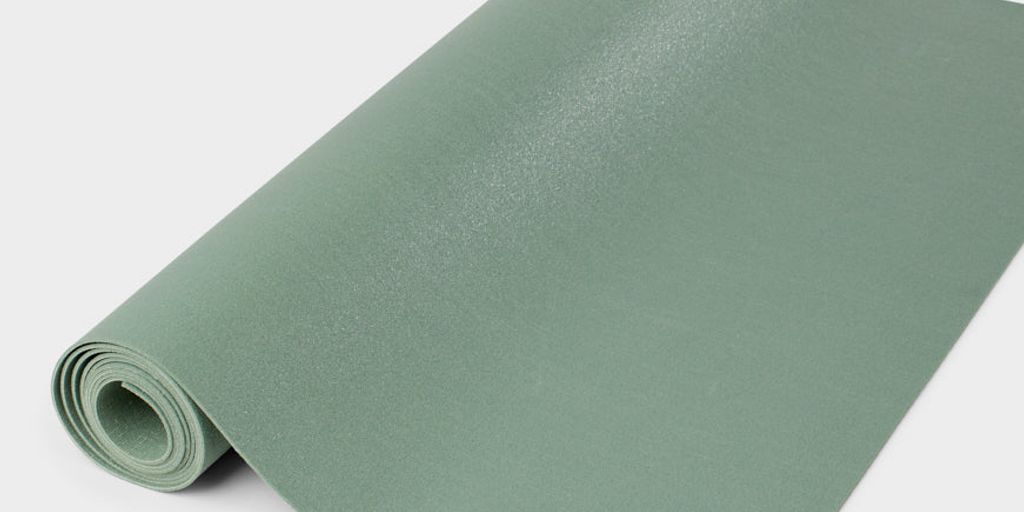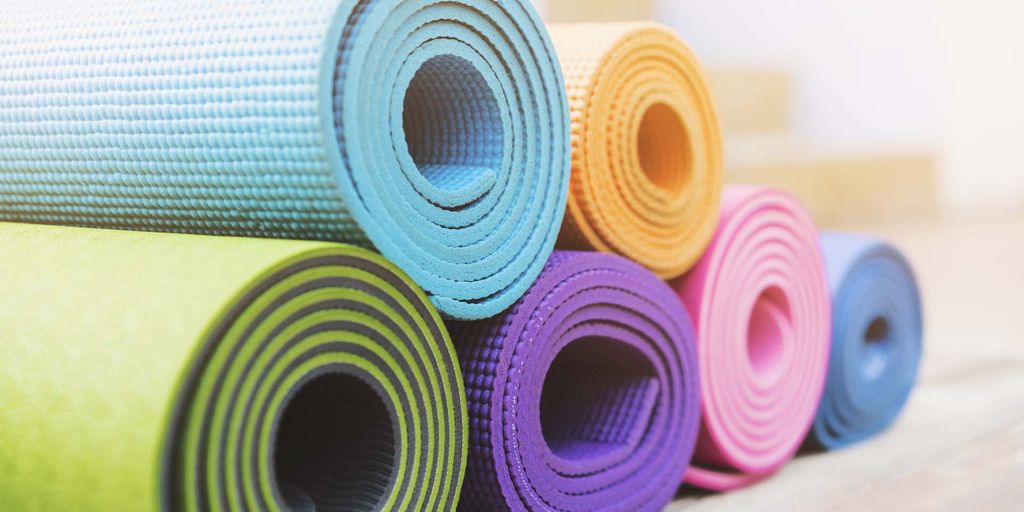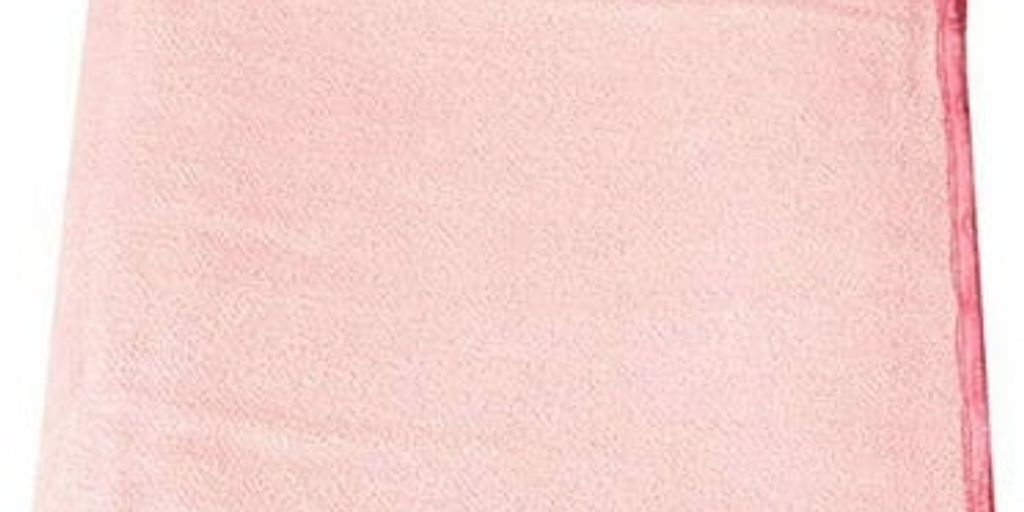
Choosing the Right Material for Your Yoga Mat: A Comprehensive Guide
Choosing the right yoga mat can be tricky. Different materials offer unique benefits and drawbacks. This guide will help you understand the various options so you can pick the best one for your needs.
Key Takeaways
- Different yoga mat materials like natural rubber, PVC, and TPE have their own pros and cons.
- Eco-friendly mats made from cork, organic cotton, and jute are great for the environment.
- Durability, maintenance, and how often you need to replace your mat depend on the material.
- Comfort and support are influenced by the mat's thickness, texture, and grip.
- Consider allergies when choosing a mat, and look for hypoallergenic options if needed.
Understanding Different Yoga Mat Materials
Choosing the right yoga mat can be tricky with so many materials available. Each type has its own benefits and drawbacks, so it's important to know what you're looking for.
Natural Rubber
Natural rubber mats are popular for their excellent grip and eco-friendliness. They are made from renewable resources and provide a good balance of comfort and support. However, they can be heavy and may have a strong smell when new.
PVC
PVC mats are known for their durability and affordability. They offer good cushioning and are easy to clean. On the downside, they are not eco-friendly and can be slippery when wet. PVC mats are a common choice for beginners due to their low cost.
TPE
TPE mats are a newer option that combines the best features of rubber and PVC. They are lightweight, non-toxic, and provide good grip. TPE mats are also more environmentally friendly than PVC mats, making them a great choice for those looking to reduce their environmental impact.
When choosing a yoga mat, consider the material, thickness, and cushioning for optimal use. This will help you find a mat that meets your needs and enhances your practice.
Eco-Friendly Yoga Mat Options
Cork
Cork yoga mats are a great choice for those looking for eco-friendly options. They are made from the bark of cork oak trees, which can be harvested without harming the tree. This makes cork a renewable resource. Cork mats are naturally antimicrobial, which means they resist mold and mildew. They also provide excellent grip, even when wet, making them ideal for hot yoga sessions.
Organic Cotton
Organic cotton yoga mats are another sustainable option. These mats are made from cotton grown without the use of pesticides or synthetic fertilizers. This makes them a healthier choice for both the environment and your skin. Organic cotton mats are soft and provide a comfortable surface for your practice. They are also machine washable, making them easy to clean and maintain.
Jute
Jute yoga mats are made from the fibers of the jute plant, which is a fast-growing and renewable resource. Jute mats are biodegradable and can be composted at the end of their life cycle. They offer a natural texture that provides good grip and support. Jute mats are also lightweight and easy to carry, making them a convenient option for yogis on the go.
Choosing an eco-friendly yoga mat not only benefits your practice but also helps protect the planet. It's a small step towards a healthier and more sustainable lifestyle.
Durability and Longevity of Yoga Mat Materials
Wear and Tear
Yoga mats go through a lot of stress during workouts. Over time, they can show signs of wear and tear. High-end yoga mats made from durable materials like cork and natural rubber can last longer. However, cheaper mats might need replacing more often.
Maintenance Tips
Taking care of your yoga mat can extend its life. Here are some tips:
- Clean your mat regularly with a gentle cleaner.
- Avoid exposing it to direct sunlight for long periods.
- Store it in a cool, dry place.
Replacement Frequency
How often should you replace your yoga mat? It depends on the material and how often you use it. For example, a high-quality mat made from natural rubber might last for years, while a cheaper PVC mat might need replacing every few months. Keep an eye out for signs of wear, like thinning or tearing, to know when it's time for a new one.
Regular maintenance and choosing the right material can make your yoga mat last longer and save you money in the long run.
Comfort and Support: Finding the Right Balance
Thickness and Cushioning
When choosing a yoga mat, thickness and cushioning are crucial for comfort. A thicker mat provides more padding, which is great for poses that put pressure on your joints. However, too much thickness can make balancing poses harder. Most mats range from 1/16 to 1/4 inch in thickness.
Texture and Grip
The texture of your yoga mat affects your grip. A mat with a good grip helps you hold poses without slipping. Some mats have a natural stickiness, while others have a raised texture for extra traction. Consider material, thickness, cushioning, grip, and traction for an enhanced yoga experience.
Temperature Regulation
Some mats are designed to keep you cool during hot yoga sessions. These mats are made from materials that wick away sweat and moisture. This feature is especially important if you practice in a warm environment. Look for mats that offer good temperature regulation to stay comfortable during your practice.
Finding the right balance between comfort and support can make your yoga practice more enjoyable and effective. Choose a mat that meets your needs and enhances your overall experience.
Allergy Considerations for Yoga Mat Materials
When choosing a yoga mat, it's important to think about allergies. Some materials can cause reactions, so it's good to know your options.
Hypoallergenic Options
For those with allergies, hypoallergenic mats are a great choice. These mats are made from materials that are less likely to cause allergic reactions. Look for mats made from natural rubber or organic cotton.
Common Allergens
Allergens like pollen, dust, and pet dander can settle on your mat, especially if you practice at home. This can lead to sneezing, itchy eyes, and other symptoms. It's important to clean your mat regularly to avoid these issues.
Cleaning and Care
Keeping your mat clean is key to avoiding allergens. Wipe it down after each use and wash it thoroughly every few weeks. Use a gentle soap and water, and let it air dry completely before rolling it up.
Regular cleaning not only helps with allergies but also extends the life of your mat.
Cost vs. Value: Investing in a Quality Yoga Mat
Budget-Friendly Choices
When you're just starting out, you might not want to spend a lot on a yoga mat. Budget-friendly options can still offer good quality. Look for mats made from PVC or basic TPE. These materials are affordable and provide decent grip and cushioning. Remember, a higher price doesn't always mean better quality.
Mid-Range Options
If you're ready to invest a bit more, mid-range mats offer a balance between cost and features. These mats often use better materials like natural rubber or higher-quality TPE. They provide improved durability and comfort. Mid-range mats are a good choice for regular practitioners who need a reliable mat without breaking the bank.
Premium Mats
For those who practice yoga frequently or want the best experience, premium mats are worth considering. These mats are made from top-notch materials like organic cotton, cork, or high-end natural rubber. They offer superior grip, cushioning, and longevity. While they come with a higher price tag, the investment can be worthwhile for serious yogis.
Investing in a quality yoga mat can enhance your practice and provide better support and comfort. Choose a mat that fits your needs and budget, and you'll enjoy your yoga sessions even more.
Sustainability and Ethical Considerations
Biodegradable Materials
When choosing a yoga mat, it's important to think about the environment. Biodegradable materials break down naturally, causing less harm to the planet. Mats made from natural rubber, cork, and jute are great options. They decompose over time, unlike PVC mats which can take hundreds of years to break down.
Fair Trade Practices
Fair trade practices ensure that workers are paid fairly and work in safe conditions. When you buy a mat with a fair trade label, you support ethical labor practices. This means the people making your mat are treated well and paid a fair wage.
Recyclability
Some yoga mats can be recycled, which helps reduce waste. Look for mats made from recyclable materials like TPE. Recycling your old mat instead of throwing it away can make a big difference. Always check if your local recycling center accepts yoga mats.
Choosing a yoga mat that is both sustainable and ethically made helps protect the planet and supports fair labor practices. It's a small step that can make a big impact.
Caring for our planet and making ethical choices are important to us. At Yune Yoga, we offer eco-friendly yoga mats and accessories that help you stay committed to a sustainable lifestyle. Check out our range of products designed with the environment in mind. Visit our website to explore more and make a positive impact today!
Conclusion
Choosing the right yoga mat material can make a big difference in your practice. Whether you go for the eco-friendly natural rubber, the lightweight and durable PVC, or the soft and comfy TPE, each material has its own perks. Think about what matters most to you, like grip, thickness, and how easy it is to clean. Trying out different mats can also help you find the perfect fit. Remember, the best yoga mat is one that supports your practice and makes you feel good. Happy practicing!
Frequently Asked Questions
What is the best material for a yoga mat?
The best material for a yoga mat depends on your needs. Natural rubber is great for grip, while PVC is durable. TPE is a good mix of both.
Are eco-friendly yoga mats good?
Yes, eco-friendly yoga mats are good. They are made from materials like cork, organic cotton, and jute. These materials are better for the environment.
How often should I replace my yoga mat?
You should replace your yoga mat when it shows signs of wear and tear. This can be every 6 to 12 months, depending on how often you use it.
What thickness is best for a yoga mat?
The best thickness for a yoga mat depends on your comfort. A thicker mat offers more cushioning, while a thinner mat provides better stability.
Can I clean my yoga mat?
Yes, you can clean your yoga mat. Use a mild soap and water solution. Make sure to dry it completely before using it again.
Are there hypoallergenic yoga mats?
Yes, there are hypoallergenic yoga mats. Look for mats made from natural rubber, organic cotton, or other hypoallergenic materials.


